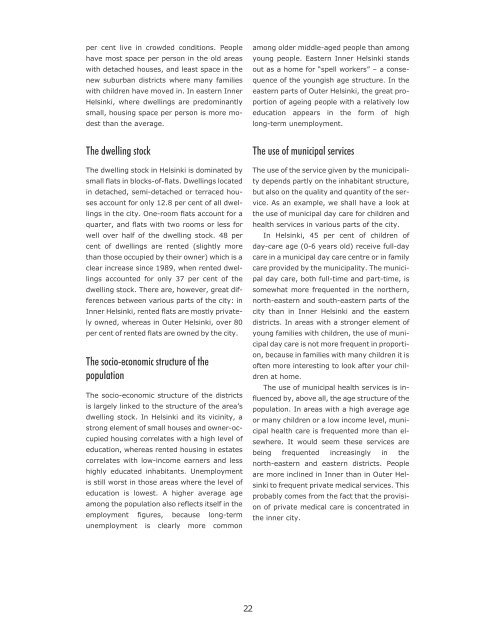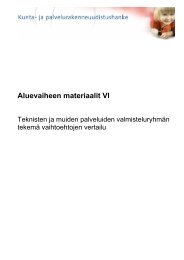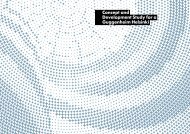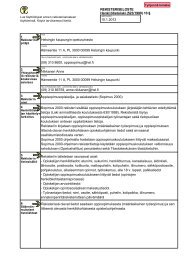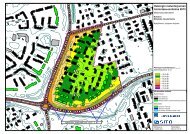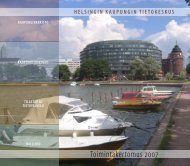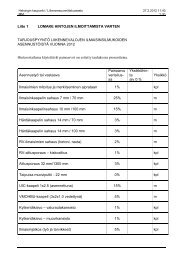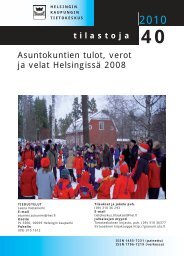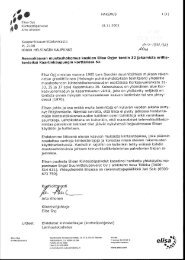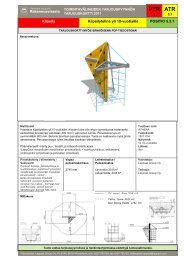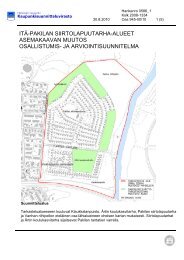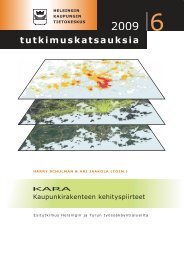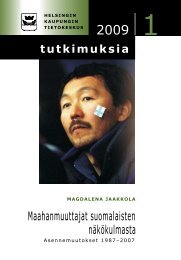Helsinki alueittain 2004 verkkojulkaisuja
Helsinki alueittain 2004 verkkojulkaisuja
Helsinki alueittain 2004 verkkojulkaisuja
Create successful ePaper yourself
Turn your PDF publications into a flip-book with our unique Google optimized e-Paper software.
per cent live in crowded conditions. People<br />
have most space per person in the old areas<br />
with detached houses, and least space in the<br />
new suburban districts where many families<br />
with children have moved in. In eastern Inner<br />
<strong>Helsinki</strong>, where dwellings are predominantly<br />
small, housing space per person is more modest<br />
than the average.<br />
among older middle-aged people than among<br />
young people. Eastern Inner <strong>Helsinki</strong> stands<br />
out as a home for “spell workers” – a consequence<br />
of the youngish age structure. In the<br />
eastern parts of Outer <strong>Helsinki</strong>, the great proportion<br />
of ageing people with a relatively low<br />
education appears in the form of high<br />
long-term unemployment.<br />
The dwelling stock<br />
The dwelling stock in <strong>Helsinki</strong> is dominated by<br />
small flats in blocks-of-flats. Dwellings located<br />
in detached, semi-detached or terraced houses<br />
account for only 12.8 per cent of all dwellings<br />
in the city. One-room flats account for a<br />
quarter, and flats with two rooms or less for<br />
well over half of the dwelling stock. 48 per<br />
cent of dwellings are rented (slightly more<br />
than those occupied by their owner) which is a<br />
clear increase since 1989, when rented dwellings<br />
accounted for only 37 per cent of the<br />
dwelling stock. There are, however, great differences<br />
between various parts of the city: in<br />
Inner <strong>Helsinki</strong>, rented flats are mostly privately<br />
owned, whereas in Outer <strong>Helsinki</strong>, over 80<br />
per cent of rented flats are owned by the city.<br />
The socio-economic structure of the<br />
population<br />
The socio-economic structure of the districts<br />
is largely linked to the structure of the area’s<br />
dwelling stock. In <strong>Helsinki</strong> and its vicinity, a<br />
strong element of small houses and owner-occupied<br />
housing correlates with a high level of<br />
education, whereas rented housing in estates<br />
correlates with low-income earners and less<br />
highly educated inhabitants. Unemployment<br />
is still worst in those areas where the level of<br />
education is lowest. A higher average age<br />
among the population also reflects itself in the<br />
employment figures, because long-term<br />
unemployment is clearly more common<br />
The use of municipal services<br />
The use of the service given by the municipality<br />
depends partly on the inhabitant structure,<br />
but also on the quality and quantity of the service.<br />
As an example, we shall have a look at<br />
the use of municipal day care for children and<br />
health services in various parts of the city.<br />
In <strong>Helsinki</strong>, 45 per cent of children of<br />
day-care age (0-6 years old) receive full-day<br />
care in a municipal day care centre or in family<br />
care provided by the municipality. The municipal<br />
day care, both full-time and part-time, is<br />
somewhat more frequented in the northern,<br />
north-eastern and south-eastern parts of the<br />
city than in Inner <strong>Helsinki</strong> and the eastern<br />
districts. In areas with a stronger element of<br />
young families with children, the use of municipal<br />
day care is not more frequent in proportion,<br />
because in families with many children it is<br />
often more interesting to look after your children<br />
at home.<br />
The use of municipal health services is influenced<br />
by, above all, the age structure of the<br />
population. In areas with a high average age<br />
or many children or a low income level, municipal<br />
health care is frequented more than elsewhere.<br />
It would seem these services are<br />
being frequented increasingly in the<br />
north-eastern and eastern districts. People<br />
are more inclined in Inner than in Outer <strong>Helsinki</strong><br />
to frequent private medical services. This<br />
probably comes from the fact that the provision<br />
of private medical care is concentrated in<br />
the inner city.<br />
22


